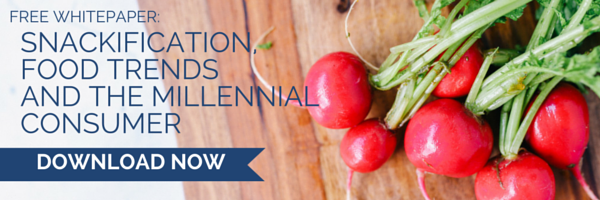
It's not just a cliché when people say that breakfast is the most important meal of the day. Science has shown that eating a nutritionally sound morning meal can improve satiety and performance throughout the whole day, and health-savvy consumers are making a healthy breakfast a priority to get their days started right. But the days when mom would put on an apron to cook up a fully sit down breakfast are a figment from another era. With more people living in all-adult households, and few people having extra time to cook elaborate meals, grab and go options are more popular than ever: Breakfast bars, protein bites and other quick and healthy options are the choice of busy modern consumers.
What Consumers Want
Modern jobs are more sedentary than before, but people are still putting in long hours. Obesity, diabetes and other lifestyle-related health problems are on the rise. To combat these issues, many Americans have become more focused on watching what they eat.
Studies show that starting the day with a healthy breakfast can lead to better choices later in the day. People who eat a good breakfast are more likely to eat healthier foods at other snack and meal times, more likely to exercise and less likely to drink excessively or engage in other unhealthy behaviors. Consumers are on the lookout for foods that make it easy for them to stick to healthy habits, but, as the sheer volume of fast food breakfasts show, it is equally important that those healthier choices to come in a convenient form.
By 2010, one in five breakfasts were eaten at McDonalds. While the fast food behemoth has lost some market share in recent years, make-at-home options like breakfast cereals have suffered, as well. In general, breakfast product sales dropped five percent between 2009 and 2014. However, sales are not down across the board. Hot cereal sales went up 2.5% in 2014, and protein bites and high protein/low fat options like egg white breakfast sandwiches have seen growth, as well. Manufacturers who can give their customers options that provide nutrition and taste in convenient take-along packages are more likely to see their breakfast food market share grow.
How Your Brand Can Win at the Breakfast Table
Examine new product options that capture consumers' twin desires for healthy eating and convenience. If your company makes cereals, consider options that are higher in fiber and complex carbs while cutting down the sugar. Consider a hot cereal option of a longstanding cold cereal brand. Portable hot cereal options like instant oatmeal or whole grain cereal in a convenient, disposable travel bowl is an option that has been successful for a number of breakfast food brands. Or, see which of your cereal flavors can be adapted to a handheld option such as a cereal bar. Can a high-protein meal be offered in a kid-friendly package to tuck into backpacks on the way to school? Consumers also love the pleasant taste, grab and go convenience and the ability to stash breakfast bars in their office drawers. They make a great option on days where people are too busy to stop for any breakfast at all on the way to work or school.
Protein-rich items are another breakfast option that is sure to win customer approval. Protein-rich breakfasts contribute to a feeling of satiety, so people are better able to get to the next meal without resorting to snacking. And, with more people turning away from sugars and simple carbohydrates, protein-rich foods are filling in the gaps.
Exploring options like protein bites can help you keep up with the needs of your modern customer. As interest in options that are healthier and more convenient continue to grow, you can continue to secure a place in shoppers' grocery baskets and their daily lives.







